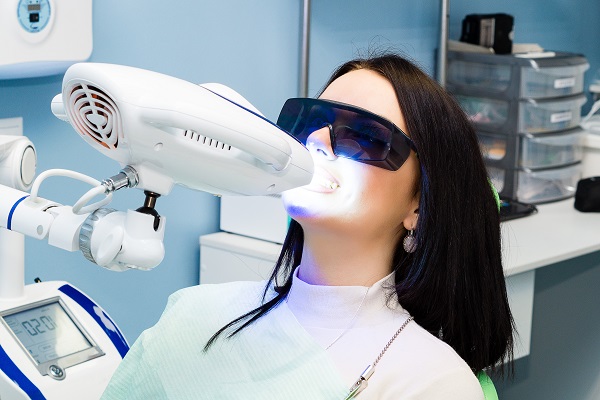
When it comes to achieving a dazzling smile, teeth whitening has become one of the most popular cosmetic treatments. But with a wide array of options, how do you choose the method that’s right for you? Two of the most prominent techniques are laser whitening and tray whitening, each offering unique benefits and drawbacks. In this article, we’ll break down these methods, exploring their effectiveness, cost, potential side effects, and overall value so you can make an informed decision for your smile.
An Introduction to Teeth Whitening
The desire for a whiter, brighter smile is a universal one, and as a result, teeth whitening has grown into a booming industry. People are increasingly turning to professional methods to brighten their teeth, but choosing the right treatment is key to both aesthetic satisfaction and oral health. Among the numerous whitening methods available, laser and tray whitening stand out as the most commonly discussed. Each offers different timelines, costs, and results, and understanding the differences can help you pick the best route for your needs. At Sparkly Whites, we guide you through this process to help you make the most informed decision about which whitening method suits your lifestyle and goals.
After all, teeth whitening isn’t just about looking good—it’s about feeling good too. If you’re ready to elevate your smile, let’s dive into the details.
Understanding Laser Teeth Whitening
Laser whitening is the Ferrari of teeth whitening. Fast, intense, and with dramatic results. This technique uses advanced laser technology to accelerate the bleaching effect of the whitening gel applied to your teeth. The laser essentially activates the gel, allowing it to work at a much faster pace than traditional whitening methods.
What makes laser whitening stand out? The speed. Results can be quite remarkable—some patients report their teeth becoming up to eight shades lighter after just one session. Depending on the extent of the discoloration, the full treatment can take anywhere from 15 to 60 minutes per session, with 2 to 4 sessions typically required. If you're considering different teeth whitening methods, laser whitening is the clear frontrunner for those seeking a quick, dramatic transformation.
However, the quick results come at a price. Laser whitening tends to cost around $1,000 per session, reflecting both the technology and expertise required. While some may consider this a worthwhile investment for an upcoming event, others may hesitate at the hefty price tag. Additionally, there are potential risks, such as enamel erosion or increased tooth sensitivity, making it crucial to only undergo the procedure under the supervision of a skilled professional.
Exploring Tray Teeth Whitening
If laser whitening is the sports car of the whitening world, tray whitening is the steady and reliable sedan. This method involves custom-fitted trays filled with a bleaching agent that you wear over your teeth for a certain period. While tray whitening is typically slower in terms of results, it is much gentler and more flexible, making it an appealing choice for those who prefer a more controlled approach.
Tray whitening works over the course of one to two weeks, and although the results take longer to appear, the process is relatively comfortable. You wear the trays at home, making it incredibly convenient. The bleaching agent used is more concentrated than the one in over-the-counter products, but the process is gradual and safer for your teeth.
One of the most attractive aspects of tray whitening is its cost. Compared to laser whitening, tray whitening is significantly more affordable. A full tray whitening kit can cost a few hundred dollars, which is a much more accessible price point for most people. It’s also a method that tends to be easier on the wallet for long-term maintenance, as the trays can be reused for touch-ups.
For individuals with more specific needs—like those dealing with intrinsic stains from medication or trauma—tray whitening can be particularly beneficial, as the custom trays can be tailored to treat different levels of discoloration.
Speed vs. Gradual Results: Which Is Better for You?
When it comes to whitening your teeth, the question often boils down to speed versus comfort. Laser whitening is perfect for those who want instant results. Need to get your smile ready for a big event in a few days? Laser whitening can give you the sparkle you’re looking for—quickly.
However, this quick fix comes with its own set of challenges. Laser whitening can lead to increased tooth sensitivity, and the rapid bleaching can sometimes cause enamel issues if not carefully monitored. It’s not the best option for everyone, particularly those with sensitive teeth.
Tray whitening, on the other hand, provides more gradual results but is gentler on the teeth. It’s a better fit for those with sensitive teeth or those who aren’t in a rush to see results. The gradual approach of tray whitening can be a great choice if you’re looking for something that’s easy on your teeth but still effective over time.
Comparing Costs: What’s Your Budget?
Cost plays a major role in the decision-making process. If you're looking for a fast and noticeable change and you’re willing to invest in it, laser whitening is the way to go. However, for those who want to achieve a whiter smile on a budget, tray whitening offers a more affordable and sustainable option.
A single session of laser whitening generally costs about $1,000. In contrast, tray whitening typically ranges between $200 and $500, depending on the dentist and the customizations required. Not only is tray whitening cheaper upfront, but it also tends to have lower long-term maintenance costs.
Side Effects and Risks: What to Watch Out For
Every treatment has its potential downsides, and teeth whitening is no exception. Laser whitening’s intense bleaching process can leave your teeth more vulnerable to sensitivity, especially if the procedure is not performed correctly. For those with already sensitive teeth, this could result in discomfort or even more long-term issues like enamel erosion.
On the other hand, tray whitening is generally considered a safer and less aggressive option. However, it’s not without its risks. If the trays are used incorrectly—such as wearing them for too long or overloading them with bleaching gel—it can lead to gum irritation or uneven whitening. It’s also important to ensure the trays are custom-made by a professional to avoid mishaps like the gel touching the gums. Back to Homepage
Longevity: How Long Do Your Results Last?
Both methods provide effective results, but how long will they last? The longevity of your whiter smile depends largely on your lifestyle habits. For both laser and tray whitening, avoiding foods and drinks that stain (like coffee, red wine, and tobacco) is essential to maintaining the brightness of your smile.
Laser whitening tends to provide immediate and dramatic results, but those results may fade quicker if you're not careful about your post-treatment care. Tray whitening offers a more gradual improvement, but the effects can last longer, especially with regular touch-ups.
The Bottom Line: Which Method Is Right for You?
In the battle of laser versus tray whitening, there’s no one-size-fits-all answer. If you’re looking for quick, powerful results and don’t mind paying a premium price for it, laser whitening might be the perfect fit. However, if you’re more interested in a safer, gentler approach that won’t break the bank, tray whitening is a fantastic choice.
At the end of the day, your decision should be based on your unique needs, budget, and tolerance for potential side effects. Consulting with a dental professional will give you the best guidance to make a choice that’s right for your smile and your oral health.
Ultimately, both options can deliver beautiful results, and with the right care and treatment, your brighter smile will last for years to come.
